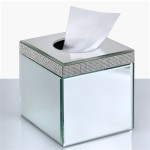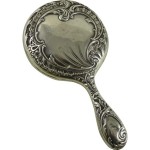How to Paint a Wood Frame Mirror: A Comprehensive Guide
Painting a wood frame mirror is a relatively straightforward project that can significantly enhance the aesthetic appeal of a room. A fresh coat of paint can transform a dated or worn mirror into a statement piece that complements existing decor. This process involves careful preparation, proper painting techniques, and a bit of patience to achieve a professional-looking result. This guide provides detailed instructions on how to paint a wood frame mirror, covering everything from gathering necessary materials to applying the final coat of paint.
Key Point 1: Preparation is Paramount
The success of any painting project hinges on thorough preparation. A well-prepared surface ensures optimal paint adhesion and a smooth, even finish. Neglecting this step can lead to peeling, chipping, and an overall unprofessional appearance. Preparation involves cleaning, repairing imperfections, and protecting the mirror itself.
Firstly, the work area must be prepared. Lay down drop cloths or plastic sheeting to protect the surrounding floor and furniture from paint splatters and spills. Adequate ventilation is also essential, particularly when using oil-based paints or primers. Open windows and doors or use a fan to circulate air throughout the work area.
Next, the wood frame mirror needs to be thoroughly cleaned. Use a mild soap and water solution to remove any dirt, dust, grease, or grime that may have accumulated on the frame. A slightly dampened cloth or sponge can be used for this purpose. Avoid using harsh chemicals or abrasive cleaners, as these can damage the wood finish. Once the frame is clean, allow it to dry completely before proceeding to the next step. This drying process may take several hours, depending on the humidity level in the environment.
After cleaning, inspect the wood frame for any imperfections, such as scratches, dents, or cracks. Small imperfections can be filled with wood filler or putty. Apply the filler according to the manufacturer's instructions, using a putty knife to spread it evenly across the damaged area. Allow the filler to dry completely before sanding it smooth with fine-grit sandpaper. For more significant damage, professional wood repair services may be necessary.
Protecting the mirror from paint is crucial. This can be achieved using painter's tape. Apply the tape carefully along the edge of the mirror, ensuring that it adheres firmly to the glass. Overlap the tape slightly onto the wood frame to create a clean, crisp line. For added protection, consider covering the entire mirror surface with paper or plastic sheeting, securing it with tape. Ensure that all exposed areas of the mirror are completely covered to prevent accidental paint splatters.
Finally, sanding the wood frame is an important step in creating a smooth surface for paint adhesion. Use medium-grit sandpaper to lightly sand the entire frame, paying particular attention to any areas that have been filled with wood filler. Sand in the direction of the wood grain to avoid scratching the surface. After sanding, remove any dust particles with a tack cloth or a damp cloth. The frame should now be ready for priming.
Key Point 2: Priming and Painting Techniques
Priming the wood frame is a critical step in ensuring proper paint adhesion and a uniform finish. Primer creates a barrier between the wood and the paint, preventing the paint from being absorbed into the wood and ensuring that the color is consistent throughout. The type of primer used will depend on the type of paint being used and the existing condition of the wood.
For latex paint, a latex-based primer is recommended. For oil-based paint, an oil-based primer is the best choice. When selecting a primer, consider whether the wood has been previously painted or stained. If the wood is bare, a stain-blocking primer may be necessary to prevent tannins from bleeding through the paint. Apply the primer in thin, even coats using a brush, roller, or spray paint. Allow the primer to dry completely according to the manufacturer's instructions before proceeding to the next step. This may take several hours or even overnight.
Once the primer is dry, the wood frame is ready for painting. Choose a high-quality paint that is appropriate for wood surfaces. Latex paints are generally a good choice for interior projects, as they are durable, easy to clean, and low in VOCs (volatile organic compounds). Oil-based paints provide a harder, more durable finish, but they are more difficult to clean and have higher VOCs. Select a paint color that complements the existing decor of the room. Consider using a paint with a satin or semi-gloss finish, as these finishes are more durable and easier to clean than matte finishes.
There are several methods for applying paint to the wood frame mirror. Brushing is a traditional method that allows for precise control, particularly in intricate areas. Use a high-quality brush with synthetic bristles for latex paint and natural bristles for oil-based paint. Apply the paint in thin, even coats, working in the direction of the wood grain. Avoid applying too much paint at once, as this can lead to drips and runs. Rolling is a faster method for covering large, flat surfaces. Use a small foam roller for best results, and apply the paint in thin, even coats, overlapping each stroke slightly. Spray painting is the fastest and most efficient method for achieving a smooth, even finish. Use a spray gun or aerosol can, and apply the paint in light, even coats, holding the can or gun about 10-12 inches from the surface. Protect the surrounding area from overspray by using drop cloths or masking tape.
Regardless of the application method chosen, it is important to apply multiple thin coats of paint rather than one thick coat. Thin coats dry more quickly and evenly, and they are less likely to drip or run. Allow each coat of paint to dry completely according to the manufacturer's instructions before applying the next coat. After each coat of paint has dried, lightly sand the surface with fine-grit sandpaper to remove any imperfections and create a smooth surface for the next coat. Remove any dust particles with a tack cloth before applying the next coat of paint.
Key Point 3: Finishing Touches and Cleanup
After the final coat of paint has dried completely, the finishing touches can be applied to the wood frame mirror. This includes removing the painter's tape, inspecting the frame for any imperfections, and cleaning the mirror.
Carefully remove the painter's tape from the edge of the mirror, pulling it away at a 45-degree angle. If any paint has seeped under the tape, use a razor blade or utility knife to carefully score the paint along the edge of the mirror before removing the tape. This will prevent the paint from peeling away with the tape. If any paint has splattered on the mirror, use a glass cleaner and a soft cloth to remove it. Avoid using abrasive cleaners, as these can scratch the mirror.
Inspect the painted wood frame for any imperfections, such as drips, runs, or missed spots. If any imperfections are found, carefully sand them down with fine-grit sandpaper and touch up the paint as needed. Use a small brush or cotton swab to apply the touch-up paint, and allow it to dry completely.
The final step is to clean the mirror. Use a glass cleaner and a soft cloth to clean the entire surface of the mirror, removing any dust, fingerprints, or smudges. A microfiber cloth is ideal for cleaning mirrors, as it will not leave behind any lint or streaks. Spray the glass cleaner directly onto the cloth rather than the mirror to prevent overspray. Wipe the mirror in circular motions, and then buff it dry with a clean, dry cloth. The mirror should now be clean and sparkling, ready to be displayed in the room.
Once the project is complete, clean up the work area. Dispose of any used paint cans, brushes, and rollers according to local regulations. Clean brushes and rollers with soap and water (for latex paint) or paint thinner (for oil-based paint). Store leftover paint in a cool, dry place. Place the drop cloths or plastic sheeting in the trash, and sweep or vacuum the floor to remove any paint chips or debris.
Painting a wood frame mirror is a rewarding project that can be easily accomplished with careful preparation, proper painting techniques, and a bit of patience. By following these detailed instructions, even a novice painter can achieve a professional-looking result. The newly painted mirror will add a touch of elegance and style to any room in the home.

Tutorial Create The Weathered Wood Look With Paint Transform A Mirror

Whitewashing Painted Wood Mirror Artsy Rule

How To Paint A Mirror Frame Antique White Well Purposed Woman

How To Paint A Wooden Mirror Frame My Repurposed Life

Painting Plastic Or Metal To Look Like Wood Mirror Frame Diy Refinish Frames

How To Paint A Mirror Frame Green With Decor

How To Paint A Mirror Frame Gold Remodelando La Casa

How To Paint A Mirror Frame Furniture Flipping Mirrors

How To Paint A Mirror Frame The Easy Way By Just Woods

Chalk Paint And Antiquing A Frame Diy Dekor Ramar








